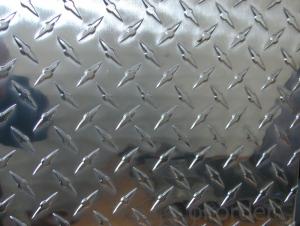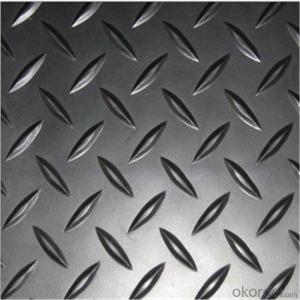Aluminum Diamond Plate 4x8
Aluminum Diamond Plate 4x8 Related Searches
Led Light Bulbs For Ceiling Fixtures Led Lamps For Ceiling 42 In Ceiling Fan With Light Aluminum Coil Stock For Gutters Aluminum Foil For The Grill Hole Saw For Aluminum Plate Aluminum Tread Plate For Trailer Bow Plate For Aluminum Boat Aluminum Foil For Grow Room Aluminum Foil For Joint PainHot Searches
Stock Price For Aluminum Aluminum Coil Stock For Sale Aluminum Gutter Coil For Sale Used Aluminum Scaffolding For Sale 1/4 Aluminum Plate For Sale Aluminum Bar Stock For Sale Aluminum Round Stock For Sale Aluminum Diamond Plate For Sale Aluminum Scaffolding For Sale Craigslist 6061 Aluminum Plate For Sale Aluminum Dock Plate For Sale 7075 Aluminum Plate For Sale Aluminum Tread Plate For Sale Aluminum Checker Plate For Sale Aluminum Plate For Sale Near Me Plate Aluminum For Sale Aluminum Plate For Sale Aluminum Square Stock For Sale Aluminum Flat Stock For Sale Billet Aluminum Stock For SaleAluminum Diamond Plate 4x8 Supplier & Manufacturer from China
Okorder.com is a professional Aluminum Diamond Plate 4x8 supplier & manufacturer, offers integrated one-stop services including real-time quoting and online cargo tracking. We are funded by CNBM Group, a Fortune 500 enterprise and the largest Aluminum Diamond Plate 4x8 firm in China.Hot Products
FAQ
- Using aluminum sheets offers several advantages compared to other materials. Firstly, aluminum is lightweight, making it easier to handle and transport than heavier materials like steel. This convenience is especially beneficial in industries where weight reduction is important. Secondly, aluminum sheets have a high strength-to-weight ratio. Despite being lightweight, they can withstand heavy loads and impacts, making them ideal for construction, aerospace, and automotive industries that require durability and structural integrity. Additionally, aluminum is highly resistant to corrosion. It forms a protective oxide layer that prevents rust and corrosion, even in harsh environments. This makes it suitable for outdoor applications, such as building facades, roofing, and marine structures, where exposure to moisture and other corrosive elements is a concern. Moreover, aluminum is highly malleable, allowing it to be easily shaped into various forms and sizes. It can be rolled into thin sheets or extruded into complex profiles, offering design flexibility for different applications. This versatility makes aluminum sheets adaptable in a wide range of industries, including manufacturing, architecture, and transportation. Furthermore, aluminum is a sustainable and recyclable material. It has a relatively low melting point, requiring less energy to recycle compared to other materials. This makes aluminum sheets a more sustainable choice, promoting environmental conservation and reducing the carbon footprint. In conclusion, the advantages of using aluminum sheets over other materials include their lightweight nature, high strength-to-weight ratio, corrosion resistance, malleability, and sustainability. These properties make aluminum sheets an excellent choice for various applications where performance, durability, and environmental considerations are essential.
- Aluminum sheets are equipped with exceptional electrical conductivity characteristics. With its low electrical resistance, aluminum finds extensive usage in diverse electrical applications. It boasts a high conductivity rating, marginally lower than that of copper, rendering it an effective electricity conductor. This attribute enables aluminum sheets to efficiently transmit electrical current with minimal energy wastage. Consequently, aluminum is extensively employed in power transmission lines, electrical wiring, and electrical connectors. Moreover, aluminum's conductivity renders it suitable for applications requiring heat dissipation, such as heat sinks in electronic devices. In general, aluminum sheets are renowned for their favorable electrical conductivity, making them a preferred choice in numerous electrical and electronic applications.
- For example, now the price of aluminum is 30000 yuan / ton. How much is that 2mm aluminum sheet with 1 square meters? What's the formula?What about the stainless steel plate, iron plate, and galvanized sheet? Can these (yuan / ton) be converted into (yuan / square)?Hurry! Which expert can I help you?!
- Know that the density of aluminum is 2.7 g / cubic centimeter or 2700 kg / cubic meterThen 2mm thick aluminium plate with a weight of 1 square meters is:M= P *v=2700*1*0.002=5.4 (kg)=5.4*10^ (-3) tonsThe price of aluminium is 30000 yuan / ton nowTherefore, the title of the money required should be 30000* (5.4*10^ (-3)) =162 yuanEmpathy,The density of iron is 7.8 KG/M3The density of stainless steel is 7.52-7.75 KG/M3The same is true of galvanized sheets, as long as the density is known
- I use an aluminum chloride deodorant at night for hyperidrosis...I'm scared I may get senile dementia when i get older!!!!! can anyone give advice??? pls..i've been using it for 3yrs
- It is possible but there are still a lot of mysteries to the root cause of the illness. My grandmother suffered with it for many years and I wish there could be a cure as its a terrible way to end the life. I read this article to research about your specific question. Yes it does say that this aluminum chloride can increase the chances of it. I believe that my grandmother must have had it from years and years of eating canned goods and products that were stored in aluminum containers. And you will notice that more and more elderly people are increasingly suffering from this in their old age nowadays. I would check with my doctor and ask if there is some other type of deoderant or personal product that can be replaced for your health condition. Hopefully there is a solution for this. Read the following article about aluminum and Alzheimer's.
- The maximum temperature resistance of aluminum sheets typically ranges from 300 to 600 degrees Celsius, depending on the specific alloy and grade of aluminum used.
- Aluminum knowledge. What is the model 3003 H24? What does H mean?
- 3003 is aluminium manganese alloy aluminum plate (Al--Mn), which is mainly composed of manganese.H24: continuous casting, continuous rolling, Zhang Liqiang and partial toughening.Is the aluminum plate with a thickness of more than 0.2mm to 500mm, 200mm width, length less than 16m aluminum material called aluminum plate or aluminum sheet, aluminum is below 0.2mm, 200mm within the width of the row material or bar (of course, with the progress of the large equipment, the width can be 600mm row material also more). Aluminum sheet refers to the rectangular plate made of aluminium ingot rolled and divided into pure aluminum plate, alloy aluminum plate, thin aluminum plate, middle thick aluminum plate and pattern aluminum plate.Aluminium alloy is added in the process of aluminum alloy elements (main alloying elements copper, silicon, magnesium, zinc, manganese, minor alloying elements such as nickel, iron, chromium, titanium, lithium, etc.) in order to improve the mechanical properties of aluminum and chemical index. Alloy aluminum sheet has some special properties of pure aluminum plate, and is widely used in special environment, such as ship, refrigerator, mould, aerospace equipment, etc..
- Cryogenic applications can indeed utilize aluminum sheets. The thermal conductivity and low temperature characteristics of aluminum render it an appropriate substance for cryogenic settings. It can endure exceedingly low temperatures without succumbing to brittleness or compromising its structural integrity. Furthermore, aluminum is both lightweight and resistant to corrosion, rendering it a pragmatic selection for cryogenic applications where weight and durability are crucial considerations. Nevertheless, it is imperative to ascertain that the precise aluminum alloy selected is compatible with the intended cryogenic application, as different alloys may exhibit differing properties and performance levels at lower temperatures.
- Yes, aluminum sheets can be used for reflective purposes. Aluminum is a highly reflective metal that has a shiny and smooth surface. It has a high reflectivity index, making it an excellent material for reflecting light and heat. Aluminum sheets are commonly used for various reflective applications, such as in mirrors, solar panels, lighting fixtures, and insulation. Due to its reflective properties, aluminum sheets are also used in the construction industry to increase energy efficiency by reflecting sunlight and reducing heat absorption.














































